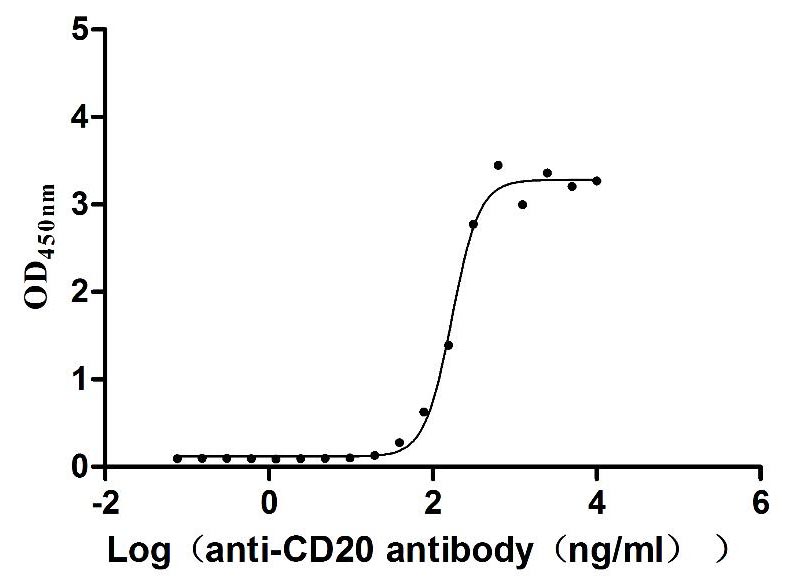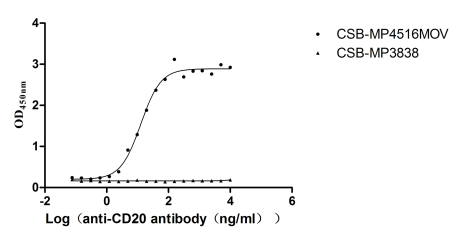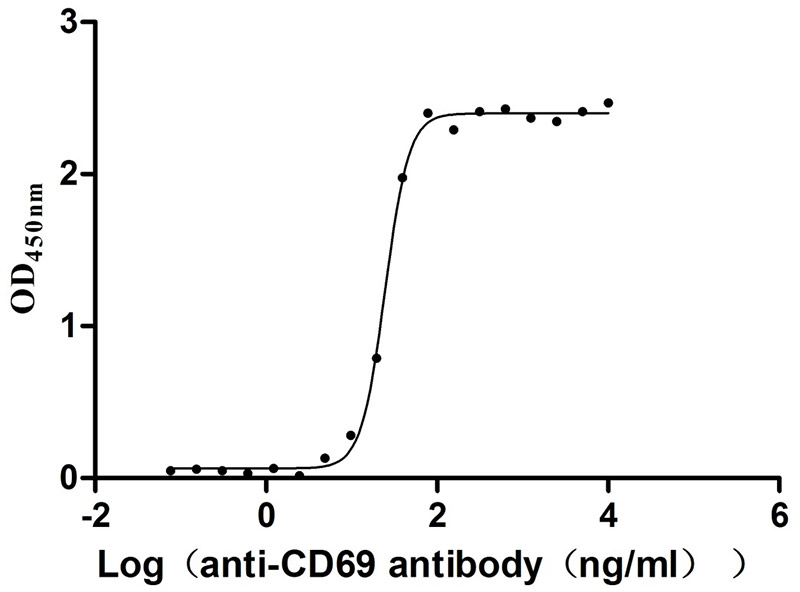Recombinant Rat Poly [ADP-ribose] polymerase 1 (Parp1), partial
-
中文名称:大鼠Parp1重组蛋白
-
货号:CSB-YP017457RA
-
规格:
-
来源:Yeast
-
其他:
-
中文名称:大鼠Parp1重组蛋白
-
货号:CSB-EP017457RA
-
规格:
-
来源:E.coli
-
其他:
-
中文名称:大鼠Parp1重组蛋白
-
货号:CSB-EP017457RA-B
-
规格:
-
来源:E.coli
-
共轭:Avi-tag Biotinylated
E. coli biotin ligase (BirA) is highly specific in covalently attaching biotin to the 15 amino acid AviTag peptide. This recombinant protein was biotinylated in vivo by AviTag-BirA technology, which method is BriA catalyzes amide linkage between the biotin and the specific lysine of the AviTag.
-
其他:
-
中文名称:大鼠Parp1重组蛋白
-
货号:CSB-BP017457RA
-
规格:
-
来源:Baculovirus
-
其他:
-
中文名称:大鼠Parp1重组蛋白
-
货号:CSB-MP017457RA
-
规格:
-
来源:Mammalian cell
-
其他:
产品详情
-
纯度:>85% (SDS-PAGE)
-
基因名:
-
Uniprot No.:
-
别名:Parp1; Adprt; Poly [ADP-ribose] polymerase 1; PARP-1; EC 2.4.2.30; ADP-ribosyltransferase diphtheria toxin-like 1; ARTD1; DNA ADP-ribosyltransferase PARP1; EC 2.4.2.-; NAD(+) ADP-ribosyltransferase 1; ADPRT 1; Poly[ADP-ribose] synthase 1; Protein poly-ADP-ribosyltransferase PARP1; EC 2.4.2.-
-
种属:Rattus norvegicus (Rat)
-
蛋白长度:Partial
-
蛋白标签:Tag type will be determined during the manufacturing process.
The tag type will be determined during production process. If you have specified tag type, please tell us and we will develop the specified tag preferentially. -
产品提供形式:Lyophilized powder
Note: We will preferentially ship the format that we have in stock, however, if you have any special requirement for the format, please remark your requirement when placing the order, we will prepare according to your demand. -
复溶:We recommend that this vial be briefly centrifuged prior to opening to bring the contents to the bottom. Please reconstitute protein in deionized sterile water to a concentration of 0.1-1.0 mg/mL.We recommend to add 5-50% of glycerol (final concentration) and aliquot for long-term storage at -20℃/-80℃. Our default final concentration of glycerol is 50%. Customers could use it as reference.
-
储存条件:Store at -20°C/-80°C upon receipt, aliquoting is necessary for mutiple use. Avoid repeated freeze-thaw cycles.
-
保质期:The shelf life is related to many factors, storage state, buffer ingredients, storage temperature and the stability of the protein itself.
Generally, the shelf life of liquid form is 6 months at -20°C/-80°C. The shelf life of lyophilized form is 12 months at -20°C/-80°C. -
货期:Delivery time may differ from different purchasing way or location, please kindly consult your local distributors for specific delivery time.Note: All of our proteins are default shipped with normal blue ice packs, if you request to ship with dry ice, please communicate with us in advance and extra fees will be charged.
-
注意事项:Repeated freezing and thawing is not recommended. Store working aliquots at 4°C for up to one week.
-
Datasheet :Please contact us to get it.
靶点详情
-
功能:Poly-ADP-ribosyltransferase that mediates poly-ADP-ribosylation of proteins and plays a key role in DNA repair. Mediates glutamate, aspartate, serine or tyrosine ADP-ribosylation of proteins: the ADP-D-ribosyl group of NAD(+) is transferred to the acceptor carboxyl group of target residues and further ADP-ribosyl groups are transferred to the 2'-position of the terminal adenosine moiety, building up a polymer with an average chain length of 20-30 units. Serine ADP-ribosylation of proteins constitutes the primary form of ADP-ribosylation of proteins in response to DNA damage. Mainly mediates glutamate and aspartate ADP-ribosylation of target proteins in absence of HPF1. Following interaction with HPF1, catalyzes serine ADP-ribosylation of target proteins; HPF1 conferring serine specificity by completing the PARP1 active site. Also catalyzes tyrosine ADP-ribosylation of target proteins following interaction with HPF1. PARP1 initiates the repair of DNA breaks: recognizes and binds DNA breaks within chromatin and recruits HPF1, licensing serine ADP-ribosylation of target proteins, such as histones, thereby promoting decompaction of chromatin and the recruitment of repair factors leading to the reparation of DNA strand breaks. In addition to base excision repair (BER) pathway, also involved in double-strand breaks (DSBs) repair: together with TIMELESS, accumulates at DNA damage sites and promotes homologous recombination repair by mediating poly-ADP-ribosylation. Mediates the poly(ADP-ribosyl)ation of a number of proteins, including itself, APLF and CHFR. In addition to proteins, also able to ADP-ribosylate DNA: catalyzes ADP-ribosylation of DNA strand break termini containing terminal phosphates and a 2'-OH group in single- and double-stranded DNA, respectively. Required for PARP9 and DTX3L recruitment to DNA damage sites. PARP1-dependent PARP9-DTX3L-mediated ubiquitination promotes the rapid and specific recruitment of 53BP1/TP53BP1, UIMC1/RAP80, and BRCA1 to DNA damage sites. Acts as a regulator of transcription: positively regulates the transcription of MTUS1 and negatively regulates the transcription of MTUS2/TIP150. Plays a role in the positive regulation of IFNG transcription in T-helper 1 cells as part of an IFNG promoter-binding complex with TXK and EEF1A1. Involved in the synthesis of ATP in the nucleus, together with NMNAT1, PARG and NUDT5. Nuclear ATP generation is required for extensive chromatin remodeling events that are energy-consuming.
-
基因功能参考文献:
- Glucose oxidase/glucose induced stria vascularis marginal cells (MCs) death via upregulation of PARP-1 expression, accumulation of polyADP-ribose (PAR) polymers, decline of mitochondrial membrane potential and nuclear translocation of apoptosis-inducing factor, which all are biochemical features of parthanatos. PMID: 29049980
- results indicated that PARP-1 inhibition significantly enhanced transcription of genes involved in antioxidative defense and in regulation of mitochondria function, but was not able to ameliorate cells viability affected by Abeta. PMID: 29128369
- the inhibition of ROCK leads to reduced myocardial infarction size and cardiomyocyte apoptosis via the PARP/ERK signaling pathway. PMID: 28656263
- Inhibition of PARP-1 and hypothermia lead to an alteration of injury but this effect is sexually dimorphic. PMID: 28698869
- PARP1 plays a pivotal role in glucose oxidase-induced marginal cell death. PMID: 26526840
- Work demonstrated the critical role of PARP-1 in diabetic heart injury, and suggested that PARP-1 inhibition may be a feasible strategy for the treatment of diabetic cardiomyopathy. PMID: 27027354
- The data provide the first evidence that PARP1 exacerbates cardiac hypertrophy by PARylation of FoxO3. PMID: 27686254
- might be involved in streptomycin ototoxicity by regulating AIF translocation in cochlear hair cells PMID: 26963167
- Recurrent hyperglycemia in neonatal rats is associated with upregulation of PARP-1 and NF-kappaB expression and subsequent microgliosis but not neuronal cell death in the cerebral cortex. PMID: 26200703
- PARP1 is involved in the development of diabetic retinopathy, and minocycline is able to inhibit PARP1 expression and decrease cellular apoptosis PMID: 26165350
- This study demonstrate that the down-regulation of PARP-1 activity contributes to reducing post-ischemic brain damage via protection of the neurovascular unit. PMID: 26220474
- Perinatal asphyxia leads to PARP-1 overactivation, increasing the expression of pro-inflammatory cytokines and cell death in mesencephalon, effects prevented by systemic neonatal nicotinamide administration. PMID: 25835215
- Modulation of PARP-1-mediated oxidative cell injury by ring finger protein 146 (RNF146) in cardiac myocytes PMID: 24842055
- SirT1 and Parp1 expression precedes oxidative stress in rats subjected to transient cerebral focal ischemia. PMID: 25440363
- The N terminus of nuclear GAPDH binds with PARP-1, and this complex promotes PARP-1 overactivation both in vitro and in vivo. PMID: 25882840
- Data show that MP-124 induced micronuclei through poly(ADP-ribose) polymerase-1 (PARP-1) inhibition. PMID: 25868125
- Results show that activation of PARP-1 may change the expression of membrane proteins and Ca2 + permeability of AMPA channels, thus affecting the function and survival of CA1 pyramidal cells PMID: 24954469
- CXCL12 downstream signalling through Akt kinase was responsible for the reduction of PARP-1 activity which switched cell death from necrosis to apoptosis PMID: 24988468
- Advanced oxidation protein products induce intestine epithelial cell death through a redox-dependent,JNK and PARP1 mediated pathway. PMID: 24434514
- Nicotinamide may have a therapeutic potential in neurodegenerative processes due to the decreased levels of oxidative stress, apoptosis, and PARP-1 activity. PMID: 24151909
- These data demonstrated that cellular NAD depletion and decline of SIRT1 activity play critical roles in PARP-1-mediated epileptic neuronal death in the hippocampal neuronal model of acute epilepsy. PMID: 23994215
- These results show for the first time that the DNA damage/PARP-1 signaling pathway is important for pulmonary arterial hypertension development. PMID: 24270264
- roles of poly(ADP-ribose) polymerase-1 (PARP-1) and transcription factor Yin Yang 1 (YY1) in Cxcl12 transcription PMID: 23555743
- results identify PARP1 as a key regulator of ERalpha in controlling ERalpha transactivation. PMID: 23493398
- These results suggest that PARP-1 is important for myofibroblast differentiation and the pathogenesis of pulmonary fibrosis. PMID: 23260200
- Data indicate that in diabetes mellitus, tempol reduces albuminuria associated with reduction of podocyte apoptosis and decreasing oxidative stress via poly(ADP-ribose) polymerase (PARP)-1 signaling. PMID: 22555049
- intermittent hypoxia induces cell death in rat primary cerebellar granule cells by stimulating oxidative stress PARP-mediated calpain and AIF activation. PMID: 22405498
- analysis of novel poly(ADP-ribose) polymerase-1 inhibitors PMID: 22153339
- PARP-1 mediates angiotensin II-induced plasminogen activator inhibitor-1 and fibronectin in mesangial cells. PMID: 21613793
- an increased expression of PARP-1 during Sertoli cell development, together with a decrease in the expression of antioxidant enzymes. PMID: 21375507
- TopoIIbeta is an essential component in DSBs repair in primary neurons in both Ku70 and PARP-1 dependent pathways. PMID: 22019940
- Strong activation of calpain and poly(ADP-ribose) polymerase (PARP) was found in rhodopsin mutants. PMID: 21765948
- These results outline a PARP-1-dependent signal transduction mechanism that links contraction rate and Ca(2+) mobilization with the expression of genes underlying morphological changes in cardiomyocytes. PMID: 21635224
- PARP-1 overactivation in necrotizing enterocolitis may drive mucosal cell death and PARP-1 may be a novel therapeutic target in NEC. PMID: 21399558
- PARP inhibition prevents oxidative stress of bladder induced by acute urinary retention. PMID: 21416227
- Results suggest that excitotoxicity of spinal networks is mainly directed to neurons and mediated by PARP-1 death pathways. PMID: 20502958
- the difference between a long-lived and a short-lived species tested, man and rat, is directly mirrored by the enzymatic parameters of recombinant PARP-1. PMID: 20399804
- Poly(ADP-ribose) polymerase (PARP)-1-independent apoptosis-inducing factor (AIF) release and cell death are induced by eleostearic acid and blocked by alpha-tocopherol and MEK inhibition. PMID: 20177052
- the existence of two PARP-1 pools associated with the nuclear matrix of rat liver and the ability of PARP-1 automodification to facilitate its binding to the nuclear matrix were shown. PMID: 20122899
- Findings provide rationale for development and further studies of PARP inhibitors and PARP inhibitor-containing combination therapies. PMID: 19854869
- Intraendothelial poly(ADP-ribose) polymerase activation may contribute to endothelial dysfunction associated with aging. PMID: 11906946
- Activation of poly(ADP-ribose) polymerase contributes to endothelial dysfunction associated PMID: 12011985
- report the novel finding that the enzymatic activity of PARP-1 promotes, in an beta-nicotinamide adenine dinucleotide-dependent fashion, the DNA binding of NF-kappaB in microglia exposed to lipopolysaccharides, interferon-gamma or beta-amyloid 1-40 PMID: 12675907
- Poly(ADP-ribose) polymerase (PARP) is not observed in the hippocampus after exposure to immobilization stress; therefore the amount of PARP protein expression is significantly reduced following stress. PMID: 12802178
- Adprt orthologs map to homologous chromosome regions at the termini of the q-arms of human and mouse chromosomes 1 and rat 13, with gene order being conserved between the rodents. PMID: 12826757
- poly(ADP-ribose) turnover has a role in distinct pathways in meiotic and post-meiotic germinal cells PMID: 12870658
- There is early activation of PARP after a cold lesion that is related to nNOS induction and supports the relevance of nNOS and/or PARP inhibition to therapeutic approaches of traumatic brain injury. PMID: 14580948
- Data show that poly(ADP-ribose) polymerase 1 (PARP-1) is expressed during fetal development and undergoes complex developmental changes in expression, and that inhibition of PARP-1 activity differentially affects expression of surfactant proteins. PMID: 14754756
- PARP activation has a role in mediating effects of local ischemia-reperfusion injury PMID: 14770035
- PARP activation is an important mechanism in diabetic neuropathy and provides the first evidence for the potential therapeutic value of PARP inhibitors. PMID: 14988256
显示更多
收起更多
-
亚细胞定位:Nucleus. Nucleus, nucleolus. Chromosome.
-
数据库链接:
Most popular with customers
-
Recombinant Human Neuropilin-1 (NRP1) (Active)
Express system: Mammalian cell
Species: Homo sapiens (Human)
-
Recombinant Human Poliovirus receptor (PVR) (I340M), partial (Active)
Express system: Mammalian cell
Species: Homo sapiens (Human)
-
Recombinant Macaca mulatta Microtubule-associated protein tau (MAPT) (Active)
Express system: Mammalian cell
Species: Macaca mulatta (Rhesus macaque)
-
Recombinant Mouse Retinol-binding protein 4 (Rbp4) (Active)
Express system: Mammalian cell
Species: Mus musculus (Mouse)
-
Recombinant Mouse Claudin-18.2 (Cldn18.2)-VLPs (Active)
Express system: Mammalian cell
Species: Mus musculus (Mouse)
-
Recombinant Dog B-lymphocyte antigen CD20 (MS4A1)-VLPs (Active)
Express system: Mammalian cell
Species: Canis lupus familiaris (Dog) (Canis familiaris)
-
Recombinant Macaca fascicularis Membrane spanning 4-domains A1 (MS4A1)-VLPs (Active)
Express system: Mammalian cell
Species: Macaca fascicularis (Crab-eating macaque) (Cynomolgus monkey)
-
Recombinant Human Early activation antigen CD69 (CD69), partial (Active)
Express system: Mammalian cell
Species: Homo sapiens (Human)



-AC1.jpg)
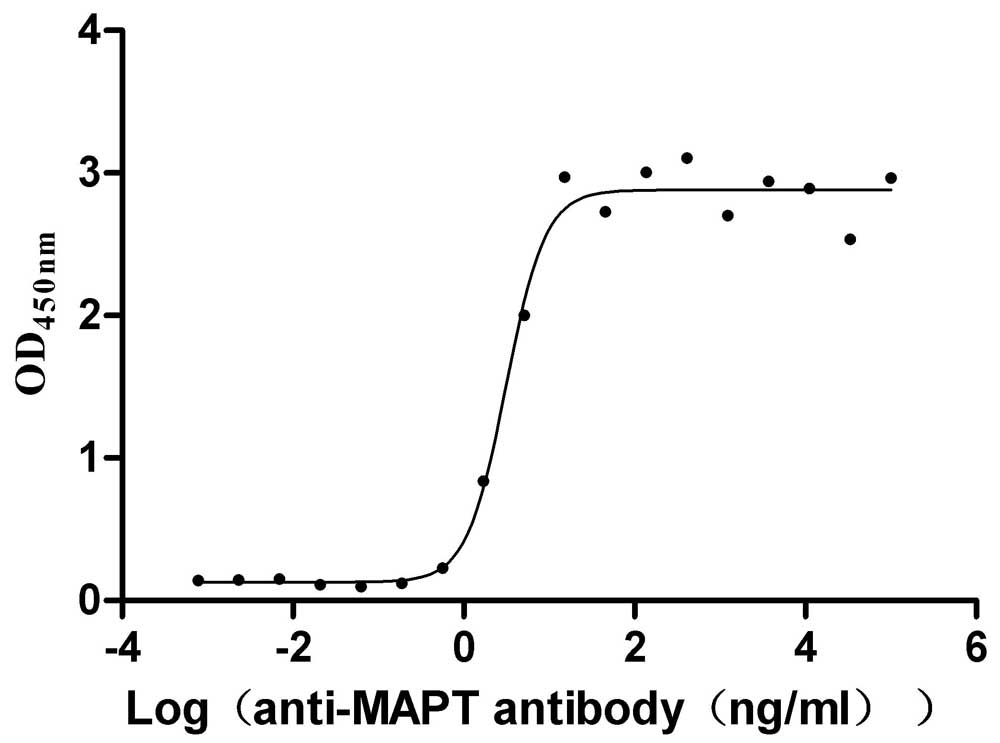
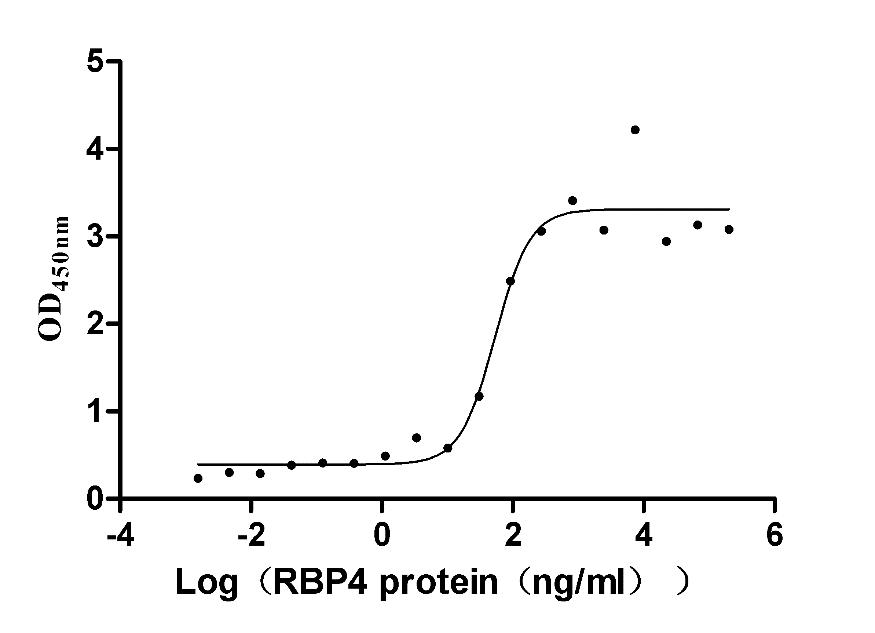
-AC1.jpg)
